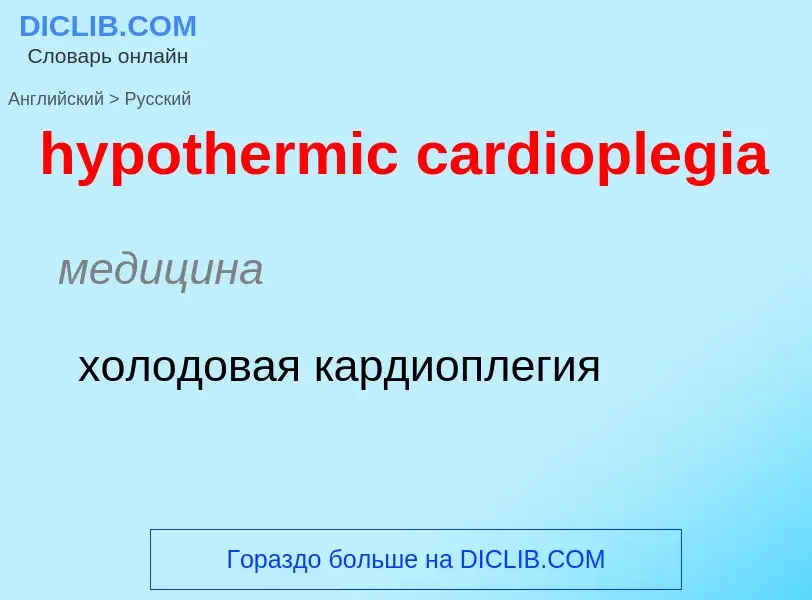Tradução e análise de palavras por inteligência artificial ChatGPT
Nesta página você pode obter uma análise detalhada de uma palavra ou frase, produzida usando a melhor tecnologia de inteligência artificial até o momento:
- como a palavra é usada
- frequência de uso
- é usado com mais frequência na fala oral ou escrita
- opções de tradução de palavras
- exemplos de uso (várias frases com tradução)
- etimologia
hypothermic cardioplegia - tradução para russo
медицина
холодовая кардиоплегия
медицина
кардиоплегия
паралич сердца
медицина
асистолия
Definição
Wikipédia
Targeted temperature management (TTM) previously known as therapeutic hypothermia or protective hypothermia is an active treatment that tries to achieve and maintain a specific body temperature in a person for a specific duration of time in an effort to improve health outcomes during recovery after a period of stopped blood flow to the brain. This is done in an attempt to reduce the risk of tissue injury following lack of blood flow. Periods of poor blood flow may be due to cardiac arrest or the blockage of an artery by a clot as in the case of a stroke.
Targeted temperature management improves survival and brain function following resuscitation from cardiac arrest. Evidence supports its use following certain types of cardiac arrest in which an individual does not regain consciousness. Both 33 °C (91 °F) and 36 °C (97 °F) appear to result in similar outcomes. Targeted temperature management following traumatic brain injury is of unclear benefit. While associated with some complications, these are generally mild.
Targeted temperature management is thought to prevent brain injury by several methods, including decreasing the brain's oxygen demand, reducing the production of neurotransmitters like glutamate, as well as reducing free radicals that might damage the brain. Body temperature may be lowered by many means, including cooling blankets, cooling helmets, cooling catheters, ice packs and ice water lavage.

